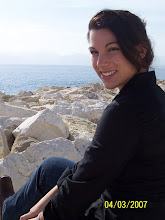

Perspectives:





 The Beauty that Surrounds Us: The chaos of everyday life is surrounded by the calm of the natural environment. It acts as a balancing force.
The Beauty that Surrounds Us: The chaos of everyday life is surrounded by the calm of the natural environment. It acts as a balancing force. Dynamic Opposition: Many times, people will see different colors or shapes when they hear reaction. I see brass as more geometric and bright, contrasting the cooler, smoother shapes associated with string instruments. Sound and approach create dynamic opposition.
Dynamic Opposition: Many times, people will see different colors or shapes when they hear reaction. I see brass as more geometric and bright, contrasting the cooler, smoother shapes associated with string instruments. Sound and approach create dynamic opposition.






Computers have become such an integral and integrated part of our lives today, functioning as both tools, means of communication, assistants and play spaces. In the world of design, computers are the keystone to the design process, but it was not always this way. In Yehuda Kalay’s book, Architecture’s New Media, the author discusses the evolution of computer based design programs. There were several aspects that I found interesting regarding the past, present and future use of design programs.
According to Kalay, architectural design technology is actually changing the way the built environment is conceived. As technology has progressed, computers have been used in different ways, at different levels of uses, volition and intelligence. Computers are used as design tools. In this instance, computer programs are “instruments with no intelligence or volition of their own”. Computers are used as a means of communication, acting as a link between “distant collaborators”, compiling the “joint effort of many specialists”. Computers can be used as design assistants or travel agents, filling in the holes when short sighted designers miss big problems. In this instance, computer programs have the ability to carry out “complex tasks and have to the volition to do so on their own, computers can go beyond the abilities of their human operators”. This may or may not be a good thing in the future. Lastly, computing is a design environment. In essence, just about every aspect of our lives have us chained to the computer, whether it be Facebook, AIM, the news or CAD. Design is chained to technology. Designers are starting to be unable to creatively function without the aid of their drafting program. Will the ultimately be detrimental to overall human creativity?
With this in mind, one begins to weigh the pros and cons of computers in today’s designs. On the pros side, benefits of computing in today’s designs are undeniable. We are able to visualize designs, make changes quickly, and explore small elements of design more thoroughly without having to concentrate as much on computations, which are taken care of by design programs. Today’s design programs are brilliant, going to far as to actually building the model, with the touch of a single human hand.
While this may be fantastic, it brings up the questions of human obsoleteness and artistic integrity. Kalay discusses how modern computer programs have worked to become more intuitive, placing staircases at the click a button and flashing warnings of overheated wires in places a designer did not see them. What will happen to craftsmanship? What will happen to spontaneity in design? What will happen to humans having to actually sit down and think about design solutions instead of just punching in numbers into a program and taking the easy way out?
Today’s design programs teach students a dependence on computers, which may or may not be a good thing. Students are able to learn much more information in a shorter period of time, but they aren’t learning the same things as craftsman 50 years before them. Yes technology advances, but will students lose the ability to think for themselves.
While there are concerns for the future of design and computing in design, the vast potential for the future is brilliant. In the past, advances in computational technology helped to advance the aerospace and automobile industries. Leaps and bounds were made in technology due to technology, and one can only imaging the potential in the future. Future systems could help the environment, not to manage it as most computers are programmed to do, but instead to provide humans with solutions that are better thought out.
The ability of computers to be so far reaching is a little scary, admittedly. Technology has increased so much in the past, with both positive and negative impacts. One may think that humans need to put a leash on technology and computing, but that may or may not be possible.
In terms of computing in design in the future, I think that there will be so many new programs it will be dizzying. I think that there needs to be a balance between craftsmanship and technology, or an integration of the two.
